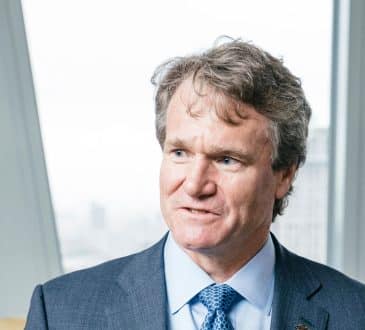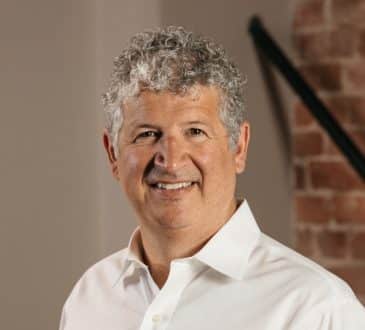Mastering the Art of the Quick Check-In

As we face the Great Resignation, it’s become clear that the leaders who can show through their actions that they care about their workers are going to surge forward in this new era.
According to Businesssolver’s 2020 report on the state of workplace empathy, 80% of employees would be willing to leave their job if they found a more empathetic employer; 57% would take a pay cut to do so. As we return to the office, so many are suffering the effects of the upheaval and trauma of the past 18 months. Recent surveys show that 55% of American workers are looking for a new job. What they crave isn’t a higher paycheck; it’s meaning and connection. To avoid seeing their most valuable asset stream out the door, it’s essential that leaders pay the same attention to their employee relationship management as they do to their client relationship management. One easy way is to get better at the quick check-in.
- Identify who matters.
First, make a list of the people who make your business work. If it’s too many to name, list by department or role (e.g., the sales team). Think beyond the usual suspects. We often get into ruts of talking to the same few people, but we gain so much by expanding our circle, in our own success and in our organization’s. - Calendar it.
One of the most important things I’ve learned in my career is that what you count is what counts. Simply tracking something focuses me and helps me to stay on top of the things that matter when the challenges of the day begin to call. However best works for you, find a way to schedule time for the easy check-in. You can calendar an hour on Friday afternoons to walk around the office, or build in time at the beginning of a weekly project status meeting, or give yourself a list of three people each week to call or email with a quick hello. - How to do it.
The goal is to show an interest in them beyond what they can provide for you. Ask them an open-ended question on something non-work related. Consider a question like, “What are you reading?,” “How’s your kid’s soccer team doing?” or “Did you see that the new season of Money Heist is out?” You can also ask about something in the environment: “Is that a new Red Sox pennant?” “What’s that mountain in your Zoom background?” It doesn’t really matter what you ask as long as it’s not offensive (so, for instance, stay away from comments on personal appearance).Once they answer, be sure that you’re actually listening to the response. Don’t look at your watch or around the room or at someone across the hall. Make eye contact. Then acknowledge what they’ve said: “I haven’t read that, is it good?” “I have to get to a game, it’s been way too long.” “That sounds fantastic!”
- Getting away gracefully.
Studies show that the way we end an experience can color our entire perception of it, so if you have a great conversation and run off without saying goodbye or demonstrate by your clumsy exit that something else is more important to you than they are, you’re actually doing worse than if you hadn’t stopped by at all. Two ideas that can help:A) Interrupt yourself, not them, for example, “That’s excellent! My kid has a big tournament this weekend, too—shoot, I’m just seeing what time it is. I’ll let you go but hope the game goes well.”
B) Consider an easy exit line. My old boss used to say, “Keep up the good work” as his signal that the conversation was over. - Know when you need more than a quick check-in.
A friend once showed up for her weekly meeting with her boss and went through with him all of her projects and their current status. At the end, she said, “I also wanted to let you know that my father is sick and I will need to take off a few days at the end of the week to go see him.” He put down his pen and met her eye. “You should have started with that. Nothing else is as important. Please take all the time you need.” Because he was so adamant, she ended up staying with her father for two weeks. She kept working during that time, but also was able to spend what ended up being her father’s final moments with him. She now says, of that boss, “I would walk through fire for that man.” Because he demonstrated that he cared about her, she has a fierce loyalty and commitment to him.
Maya Angelou said, “I’ve learned that people will forget what you said, people will forget what you did, but people will never forget how you made them feel.” We are busy, of course—everyone is busy. But all of the matters that are so urgent today will fade in a few years’, or even a few months’, time. What won’t fade is the empathy we show when it matters most. The way we show up for each will have a long-lasting effect on our team members and our relationships with them, and ultimately, on our organization as a whole. Let’s do it with care and commitment.
Written by Katharine Manning.
Add CEOWORLD magazine to your Google News feed.
Follow CEOWORLD magazine headlines on: Google News, LinkedIn, Twitter, and Facebook.
This report/news/ranking/statistics has been prepared only for general guidance on matters of interest and does not constitute professional advice. You should not act upon the information contained in this publication without obtaining specific professional advice. No representation or warranty (express or implied) is given as to the accuracy or completeness of the information contained in this publication, and, to the extent permitted by law, CEOWORLD magazine does not accept or assume any liability, responsibility or duty of care for any consequences of you or anyone else acting, or refraining to act, in reliance on the information contained in this publication or for any decision based on it.
Copyright 2024 The CEOWORLD magazine. All rights reserved. This material (and any extract from it) must not be copied, redistributed or placed on any website, without CEOWORLD magazine' prior written consent. For media queries, please contact: info@ceoworld.biz
SUBSCRIBE NEWSLETTER








